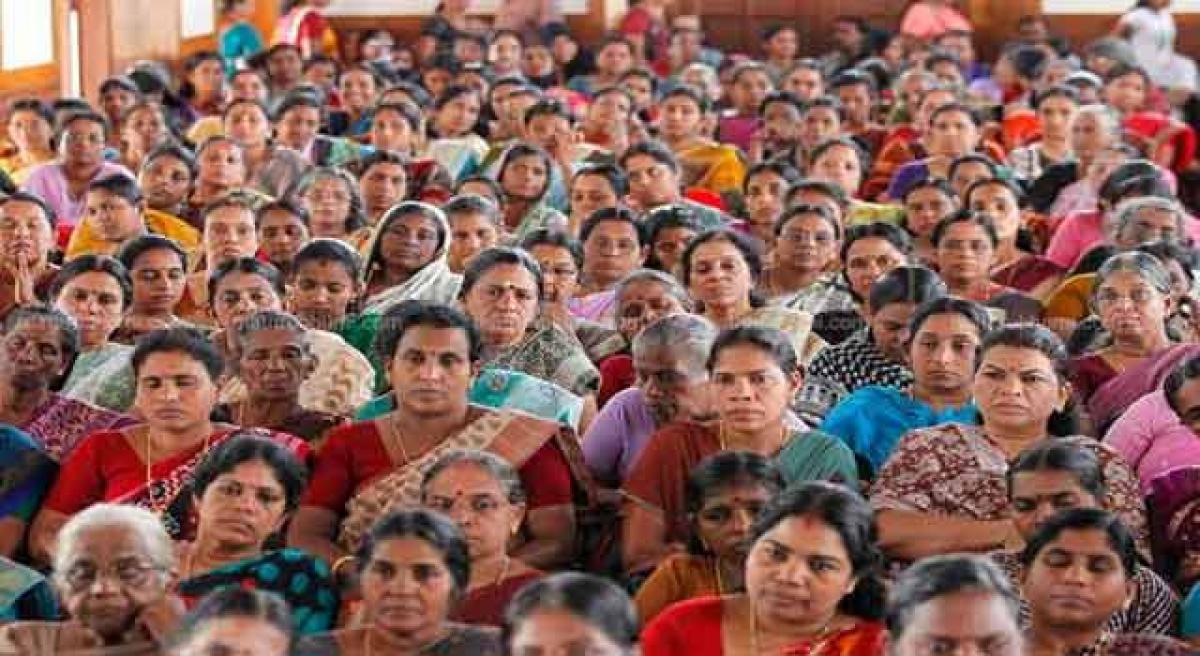Render a fair justice

Although belated, the Draft National Policy for Women, 2016, that seeks public opinion in order to facilitate overall development of women in India is a welcome decision. The new policy, which will replace the one formulated in 2001, should be a true reflection of women’s aspirations and needs given that they have grown many times over.
Although belated, the Draft National Policy for Women, 2016, that seeks public opinion in order to facilitate overall development of women in India is a welcome decision. The new policy, which will replace the one formulated in 2001, should be a true reflection of women’s aspirations and needs given that they have grown many times over.
However, save for mentioning its intent, the government has apparently not gone in for any pragmatic stock-taking with regard to issues confronting women and girls. Though Indian women are scaling heights in several sectors, they lag behind men in key social indicators like health, education and economic opportunities.
Spending on women, who comprise nearly 48% of the population, is just 4.5% of total government spending envisaged for the 2016-17 fiscal, notes IndiaSpend which analysed the data. This is a 5% decline over a decade. This makes it all the more important to earmark a gender-responsive budgeting, involving all government organs.
It is true that the Centre is addressing women issues. Juvenile Justice (Care & Protection of Children) Act 2016, Beti Bachao Beti Padhao, 33% quota for women in police forces, Special Mahila Police Volunteers, and mobile phone panic buttons, have won it only acclaim. A lot more needs to be done on the ground.
India’s female workforce participation is low at about one-fourth and thus exposes hollowness of claims of successive governments. The 2015 McKinsey Global Institute Report states that Indian women can add $2.9 trillion or 60 per cent to the annual GDP, by as early as 2025, if allowed to participate in the workforce on a gender-equal basis.
Indian society is known for according a pride of place to women, but reality speaks otherwise. Maternal Mortality Rate (MMR), defined as the number of maternal deaths per 1,00,000 live births, was 174 in 2015. Zero rate is yet to be targeted by the governments. Child sex ratio (CSR) is also falling. Census 2011 puts it at 914 as against 927 in 2001.
Much economic and social progress seems to have had no bearing on the status of women. Beti Bachao Beti Padhao is launched to improve CSR, but only in 100 select districts. It should seek to curb gender-based sex selection and ensure survival besides ensuring education of the girl-child across the country.
The One Stop Centres, offering medical, legal and psychological support to women affected by violence under Nirbhaya Fund, are yet to take off on a major scale. Anganwadi centres are rendering yeoman service but their reach to most backward and tribal areas is woefully inadequate. Similarly, illiteracy has come down from 35 per cent to 26 per cent between 2001 and 2011.
The draft calls for enrolling more girls in schools, but the States are busy winding up government schools. Thus, the government needs to frame a comprehensive action-oriented and budget-supported policy to address all the issues of single, divorced, widowed women in India, in both formal and informal sectors.

